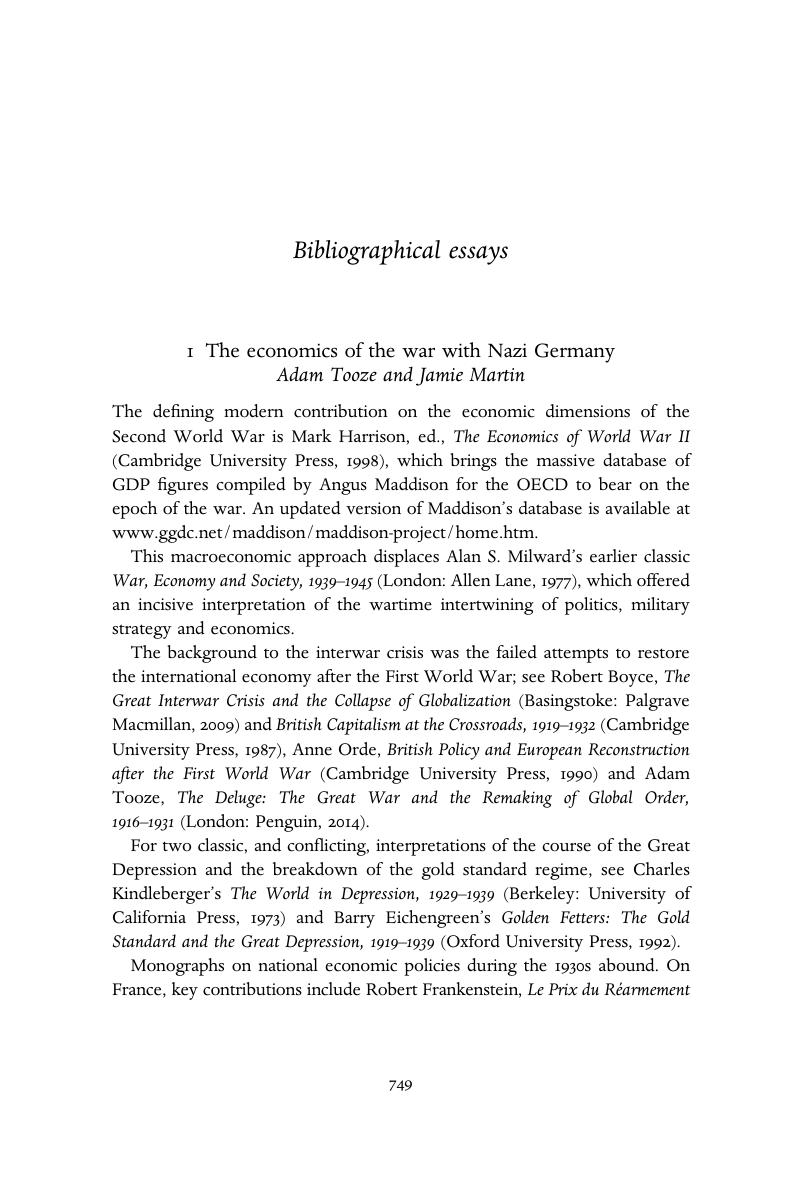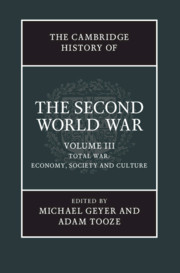Book contents
- The cambridge history of THE SECOND WORLD WAR
- The Cambridge History of the Second World War
- The Cambridge History of the Second World War
- Copyright page
- Contents
- Illustrations
- Figure
- Map
- Tables
- Contributors to volume III
- Introduction to volume III
- Part I Political Economy
- Part II The Social Practice of Peoples’ War, 1939–1945
- Part III The Moral Economy of War and Peace
- Part IV In the Aftermath of Catastrophic Destruction
- Bibliographical essays
- China
- Japan
- Southeast Asia
- 1 The economics of the war with Nazi Germany
- 2 Finance for war in Asia and its aftermath
- 3 War of the factories
- 4 Controlling resourcesCoal, iron ore and oil in the Second World War
- 5 The human fuelFood as global commodity and local scarcity
- 6 Sea transport
- 7 Knowledge economiesToward a new technological age
- 8 Environments, states and societies at war
- 9 Death and survival in the Second World War
- 10 Wars of displacementExile and uprooting in the 1940s
- 11 The war of the citiesIndustrial labouring forces
- 12 Battles for moraleAn entangled history of total war in Europe, 1939–1945
- 13 Hors de combatMobilization and immobilization in total war
- 14 The war of the villagesThe interwar agrarian crisis and the Second World War
- 15 Sexuality and sexual violence
- 16 A war for libertyOn the law of conscientious objection
- 17 Against war Pacifism as collaboration and as resistance
- 18 Humanitarian politics and governanceInternational responses to the civilian toll in the Second World War
- 19 Making peace as a project of moral reconstruction
- 20 Renegotiating the social contractWestern Europe, Great Britain, Europe and North America
- 21 The rise and fall of central planning
- 22 Nationalism, decolonization, geopolitics and the Asian post-war
- 23 Interpretations of catastropheGerman intellectuals on Nazism, genocide and mass destruction
- 24 The ghosts of war
- 25 Popular memory, popular cultureThe war in the post-war world
- 26 The Second World War in global memory space
- 27 Landscapes of destructionCapturing images and creating memory through photography
- Index
- Book part
3 - War of the factories
from Bibliographical essays
Published online by Cambridge University Press: 05 June 2015
- The cambridge history of THE SECOND WORLD WAR
- The Cambridge History of the Second World War
- The Cambridge History of the Second World War
- Copyright page
- Contents
- Illustrations
- Figure
- Map
- Tables
- Contributors to volume III
- Introduction to volume III
- Part I Political Economy
- Part II The Social Practice of Peoples’ War, 1939–1945
- Part III The Moral Economy of War and Peace
- Part IV In the Aftermath of Catastrophic Destruction
- Bibliographical essays
- China
- Japan
- Southeast Asia
- 1 The economics of the war with Nazi Germany
- 2 Finance for war in Asia and its aftermath
- 3 War of the factories
- 4 Controlling resourcesCoal, iron ore and oil in the Second World War
- 5 The human fuelFood as global commodity and local scarcity
- 6 Sea transport
- 7 Knowledge economiesToward a new technological age
- 8 Environments, states and societies at war
- 9 Death and survival in the Second World War
- 10 Wars of displacementExile and uprooting in the 1940s
- 11 The war of the citiesIndustrial labouring forces
- 12 Battles for moraleAn entangled history of total war in Europe, 1939–1945
- 13 Hors de combatMobilization and immobilization in total war
- 14 The war of the villagesThe interwar agrarian crisis and the Second World War
- 15 Sexuality and sexual violence
- 16 A war for libertyOn the law of conscientious objection
- 17 Against war Pacifism as collaboration and as resistance
- 18 Humanitarian politics and governanceInternational responses to the civilian toll in the Second World War
- 19 Making peace as a project of moral reconstruction
- 20 Renegotiating the social contractWestern Europe, Great Britain, Europe and North America
- 21 The rise and fall of central planning
- 22 Nationalism, decolonization, geopolitics and the Asian post-war
- 23 Interpretations of catastropheGerman intellectuals on Nazism, genocide and mass destruction
- 24 The ghosts of war
- 25 Popular memory, popular cultureThe war in the post-war world
- 26 The Second World War in global memory space
- 27 Landscapes of destructionCapturing images and creating memory through photography
- Index
- Book part
Summary

- Type
- Chapter
- Information
- The Cambridge History of the Second World War , pp. 754 - 755Publisher: Cambridge University PressPrint publication year: 2015

